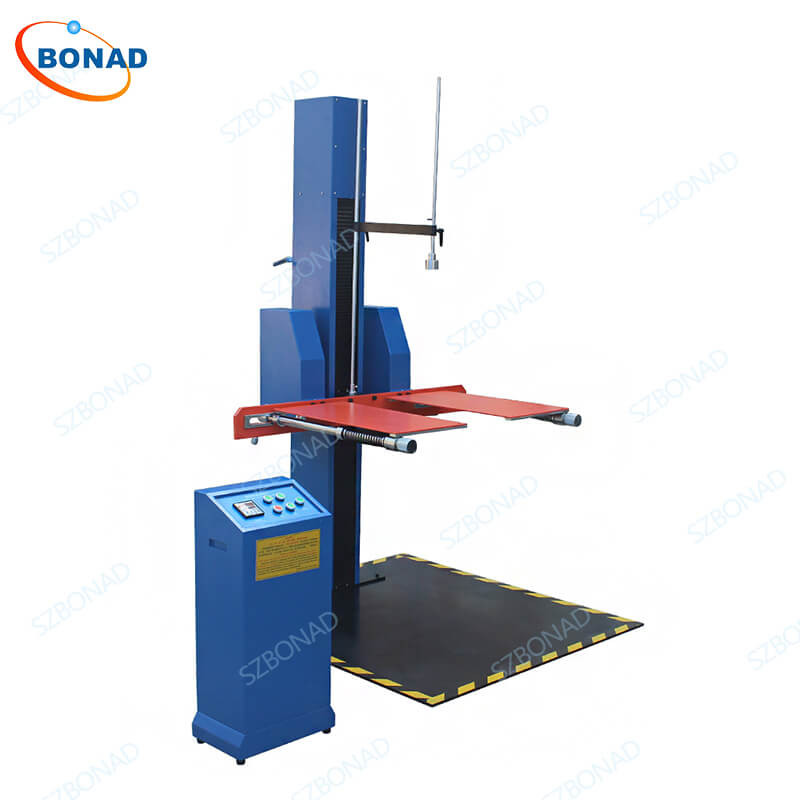Purpose and Application of Drop Test Equipment
With the rapid expansion of the logistics industry, packaging materials such as paper boxes often encounter collisions and falls during transportation. Drop test equipment is primarily used to simulate these impacts to assess the durability of packaging materials and the effectiveness of packaging designs. Widely utilized in commerce, inspection agencies, enterprises, technical supervision bodies, and educational institutions, these machines can perform face drops, corner drops, and edge drops. By simulating falls from various angles and heights, one can understand the damage a product might sustain and evaluate its maximum height tolerance and impact resistance during a fall. The results from these tests help in refining packaging designs to enhance product protection.
Working Principle of Drop Test Equipment
Drop test equipment evaluates the vertical impact resistance of packaging materials and their ability to protect the contents inside. The tests involve dropping the packaging from specified heights onto a hard, flat surface. During testing, parameters are controlled by adjusting the device according to the desired height, allowing free fall and collision with the impact surface. This method simulates real-world falls that products may experience during transportation.
The scope of application includes
- Simulating repeated free falls for connectors and small remote devices.
- Conducting drop tests on packaging.
- Evaluating free falls for non-packaged products during transportation.
Types of Drop Test Equipment
Drop test equipment is mainly categorized into three types: zero drop testing machines, single-arm drop testing machines, and double wing package drop test equipment.
- Zero drop testing machines assess the effects of actual transportation on packaging materials to evaluate their impact strength and design validity during handling. They are suitable for larger packaging and test pieces.
- Single-arm drop testing machines use a brake motor and chain drive to control arm movement. The drop height is measured with high accuracy using a numerical height scale. These machines are simple to operate with stable arm movement, making them ideal for manufacturers and quality inspection departments.
- Double wing package drop test equipment meets the demands of product resistance during transportation to improve packaging design. Equipped with a dual-column structure, spring cushioning devices, and height scale indicators, they ensure stable operation and can perform corner drops according to GB/T4857.5-92 and ISO2248-1972(E) standards.
Operating Instructions for Drop Test Equipment
- The drop condition (face, edge, or corner) can be preset.
- The drop height can be set in advance; the test piece will automatically position itself at this height.
- The operating mechanism ensures that no external forces disturb the test piece during release and free fall.
- The machine’s structure is scientifically designed with a safe inclined impact test platform.
- It performs slanted platform impact tests for transport packaging to assess impact resistance and protective capability.
Precautions for Using Drop Test Equipment
- Ensure no external forces affect the test piece during its fall.
- Use appropriate spacers to maintain horizontal positioning during drops.
- Place the test piece correctly when using an inclined test platform.
- Follow operating instructions carefully.
- Maintain equipment properly to prevent damage.
- Ensure that tests do not harm the equipment or pose safety hazards.



